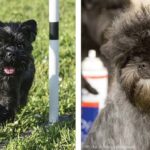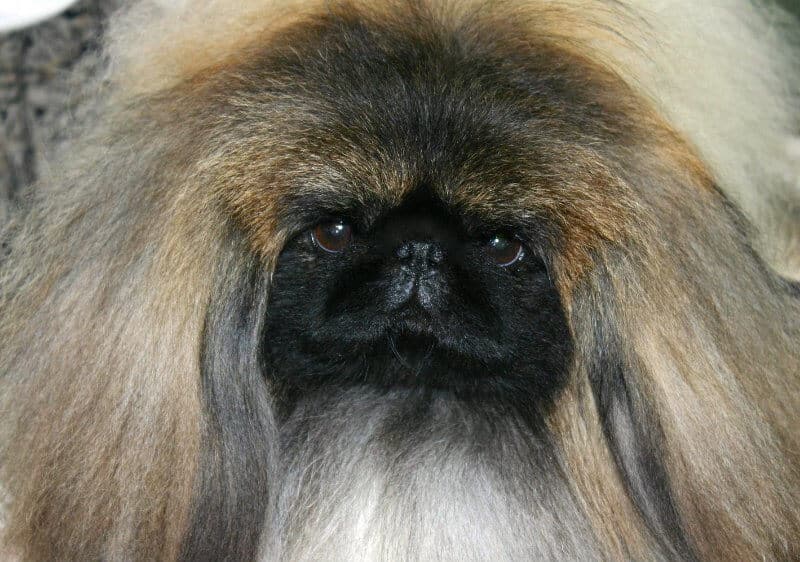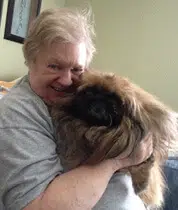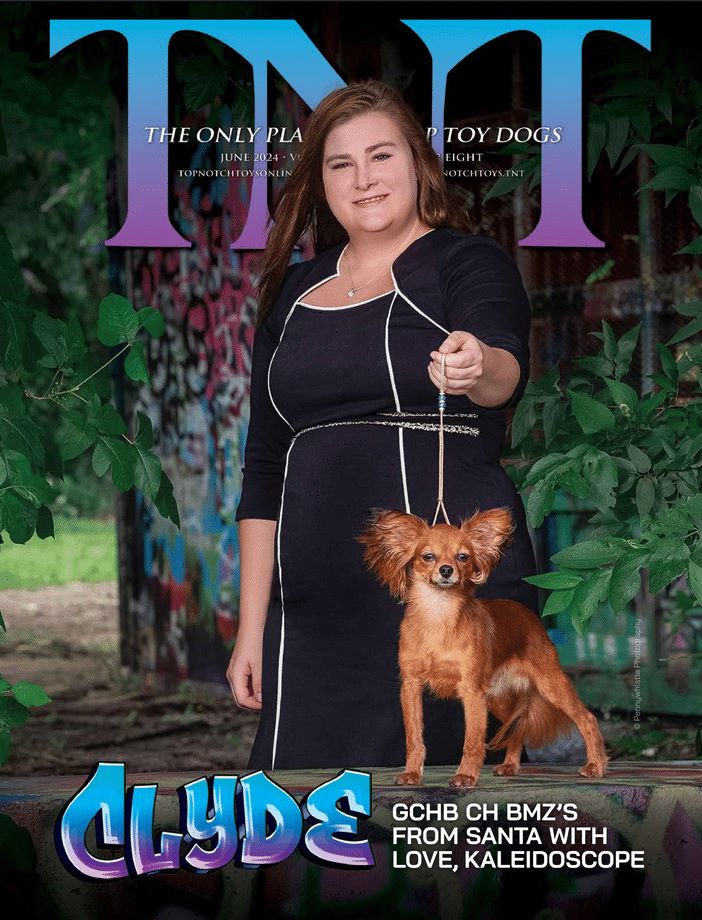Examining Pekingese on the table is similar to the examination of other breeds. That is, judges should “Examine on the table and judge on the ground.” Statements below in bold type are direct quotes from the Pekingese breed standard and italicized quotes are also included from well-known breeders of the past.
The statement under General Appearance in the standard summarizes the breed character and appearance that judges need to keep in mind during the table examination. The Pekingese is a well-balanced, compact dog of Chinese origin with heavy front and lighter hindquarters. Its temperament is one of directness, independence and individuality. Its image is lionlike, implying courage, dignity, and self-esteem rather than daintiness or delicacy.
Its image is lionlike, implying courage, dignity, and self-esteem rather than daintiness or delicacy.
The judge should first view the profile of the dog on the table from the center of the ring and then proceed to the front of the dog. While considering the profile, keep in mind that overall balance is of utmost importance. The head is large in proportion to the body, which is slightly longer than tall. The overall outline is an approximate ratio of 3 high to 5 long when measured from the forechest to the buttocks. Nigel Aubrey Jones stated, “Correct body shape is vital if correct balance and movement are to be achieved.”
Approach the front of the dog on the table and place your hands behind the ears cupping them to frame the face… keep in mind the Pekingese is a toy dog and your hands should be firm but gentle during hands on examination.
The head of a Pekingese is one of the hallmarks of the breed. Nigel Aubrey-Jones said, “The Pekingese head is the stamp of the breed.” A large head in proportion to the body is essential. Examine for a massive, broad and flat topskull combined with wide set, large dark eyes and a shallow rectangular, envelope-shaped head. The envelope implied here is a normal business size envelope, not a square birthday card envelope. This is important to remember because a Pekingese should not have a square head. You should be able to see a line drawn horizontally over the top of the broad short black nose that intersects slightly above the center of the eyes.
The wrinkle separates the upper and lower areas of the face and frames the nose. At this time determine that the topskull is broad and flat with ears that are set on the front corners with long heavy fringing that frames the face. The muzzle and the mouth should be broad with an undershot lower jaw. Since dentition is not part of the standard, it is not necessary to open a Pekingese mouth. If you suspect a problem, ask the exhibitor to show the bite.
The teeth and tongue must not show when the mouth is closed. Please do not pry open the mouth of a Pekingese as they are not trained for this type of examination.
Next move your hands gently down the short thick neck and continue down to the well laid back shoulders and tight elbows to feel the short heavy boned forelegs that are moderately bowed between the pastern and elbow. Then feel for a broad chest with well-sprung ribs slung between the forelegs. The toes on the forefeet are slightly turned out.
Then move around to the side of the table to examine the body and topline and determine that the topline is straight and level. With both hands, gently move down the body to feel the pear shape and the lighter loin with the lighter boned hindquarters with moderate angulation. The tail should be high-set with long profuse fringing. In examining the rear, you may want to move to the end of the table to determine that the rear legs are reasonably close and parallel with feet pointing straight ahead. The hind legs are lighter than the front but are firm with moderate angulation. Since the Pekingese has a long, coarse-textured, straight, stand-off outer coat, with thick, soft undercoat, it is necessary to hand examine beneath the coat to determine the correct body shape.
The standard is very specific in stating that the Pekingese, when lifted, is surprisingly heavy for its size. It is for this reason only that the judge must lift the dog. Some judges and exhibitors think the dog should be lifted because there is a weight disqualification over 14 pounds. There are several breeds with a weight disqualification and if a judge thinks a particular dog might be over the required weight, the scale should be called. With the Pekingese, all weights are correct within the limit of 14 pounds. Once again, the only reason for lifting a Pekingese is to determine that, when lifted it is surprisingly heavy for its size. The Pekingese should be small but surprisingly heavy with the majority of the weight in front. Gently lifting the dog a couple inches off the table will confirm this.
Because lifting the dog should be part of the table examination, it is not necessary to ask the exhibitor if you can lift their dog. However, to avoid surprising either the exhibitor OR the Pekingese, it would be polite to ask first so the exhibitor and the dog know what to expect. The correct way to lift the dog is to wrap your hand and forearm around the dog behind the shoulders and under the body. The other hand and arm must support the chest between the front legs. Slowly and gently lift the dog two inches above the table.
Since the majority of the weight should be in the chest, it is necessary to have your hand support the chest between the front legs. Remember always that the Pekingese should feel solid and heavy for its size.
Please Do Not…
- Lift a Pekingese above your head during the examination!! This frightens the dog and certainly distorts the features and expression. The Pekingese is regal, dignified and proud and should always display this attitude.
- Ask the exhibitors to hold their dogs so you can examine the heads. Correct expression or features will not be seen on a dog that is being held. Return the dog to the table if further examination is required and remember that you may have two dogs on the table at one time if a comparison is needed.
- Teeter-totter the dog back to front on the table. The Pekingese is not accustomed to being treated this way.
- Stand in front of the dog and lift both front feet and legs off the table putting all the weight on the rear.
- Bend over the dog while it is on the ground to examine the head or body. Return the dog to the table if you want to examine further.
In spite of the dignified and somewhat aloof attitude of the Pekingese, they are truly anxious to please and be your friend. Do enjoy meeting and judging this unique breed.
In spite of the dignified and somewhat aloof attitude of the Pekingese, they are truly anxious to please and be your friend.
Rose Marie Katz, one of the prominent American breed-exhibitors of Pekingese in the 1950s and 60s said, “The Pekingese dog should be judged as a whole. It must present a picture of balance and type. It must be evaluated for its good points rather than torn apart for its faults. In evaluating a Pekingese, one must keep in mind that it is a toy dog of great substance and character for its small size.”
Pekingese Examination on the Table
Originally published in Showsight Magazine, July 2013.
Pekingese Dog Breed Magazine
Top Notch Toys is the only publication to offer dedicated Digital Breed Magazines for ALL recognized AKC Toy Group Breeds.
Read and learn more about the loyal Pekingese dog breed with articles and information in our Pekingese Dog Breed Magazine.
Error embedding FlippingBook shortcode, please check the flipbook url. (https://digital.topnotchtoys.com/view/387081393/)










